#Grand Duchess Anna Feodorovna
Explore tagged Tumblr posts
Text


“During these early days of my life in St. Petersburg, I was introduced to Grand Duchesses Elizabeth and Anna, the wives of Alexander and Konstantin. The first, a former Princess of Baden, was lovely and kind, and at the same time possessed the most gentle character. The latter was probably even more a striking beauty, but still she could not overshadow the charms of Elizabeth.”
- Prince Eugen of Wurttemberg on Grand Duchesses Elizaveta Alexeievna and Anna Feodorovna, wives of the future Emperor Alexander I of Russia and his brother, Grand Duke Konstantin Pavlovich.
#prince eugen of wurttemberg#empress elizaveta alexeievna#grand duchess anna feodorovna#romanov#russia#quotes#augustin ritt#portrait miniature
31 notes
·
View notes
Text
Aikatsu: The Stars of Legend will get a new character in the latter half of Season 2
Theodora Elizabeth Juliane von Saxe-Coburg-Gotha (OC): The youngest daughter of Duke Octavius and Duchess Annabelle of Saxe-Coburg-Gotha, she's a shy girl forbidden from leaving her family's castle in Thuringia. She greatly resembles a distant relative, Princess Juliane of Saxe-Coburg-Saalfeld (aka Grand Duchess Anna Feodorovna of Russia), to the point of wearing a red dress and hat similar to the one the princess wore in a painting.
#aikatsu the stars of legend#theodora elizabeth juliane von saxe-coburg-gotha#juliane henriette ulrike von saxe-coburg-saalfeld#priness juliane of saxe-coburg-saalfeld#grand duchess anna feodorovna#some irl history in this...#aikatsu oc
0 notes
Text
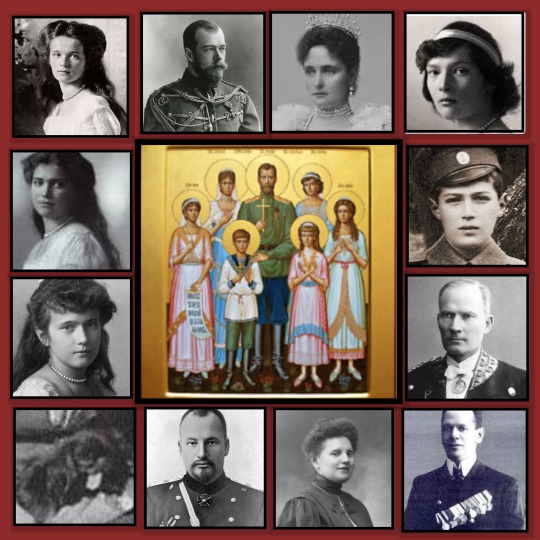
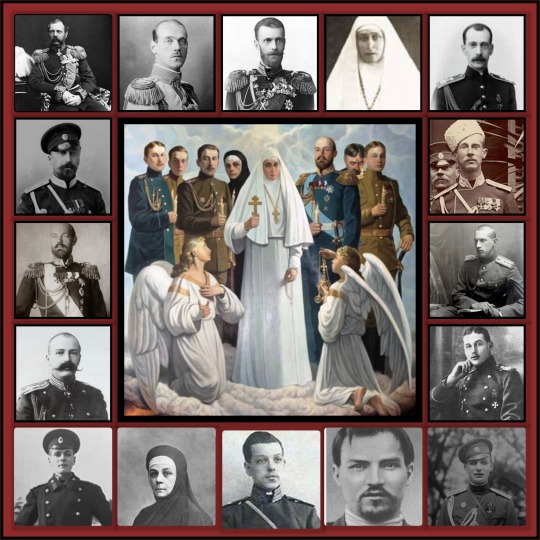
The Romanov Martyrs
I wanted to put together a little memorial that included all the members of the Romanov Family (as well as the members of their staff) that were murdered by the Bolshevik terrorists. This seems like a good week to keep them in our minds. Although we love and mourn the children especially, there were others we cannot forget.
Tsar Alexandre II was hunted down until finally blown to pieces.
Dowager Empress Maria Feodorovna lost two sons and five grandchildren (no wonder she could not accept they were dead)
Grand Duke Sergei Alexandrovich was also hunted down and blown to pieces
Three Mikhailovichi brothers were murdered
Four Konstantinovichi were murdered, three of them brothers; I cannot imagine what their mother, Grand Duchess Elizabeth Mavrikievna, went through...and so on.
May they rest in peace.
#russian history#imperial russia#romanov family#Nicholas II#Tsar Alexander II#Empress Alexandra Feodorovna#Grand Duchess Elizabeth Feodorovna#OTMAA#Grand Duke Mikhail Alexandrovich#Grand Duke Sergei Alexandrovich#Grand Duke Pavel Alexandrovich#Grand Duke Nicholas Mikhailovich#Grand Duke Georgiy Mikhailovich#Grand Duke Sergei Mikhailovich#Grand Duke Dmitry Konstantinovich#Prince Ioann Konstantinovich#Prince Igor Konstantinovich#Prince Konstantin Konstantinovich#Dr. Eugene Botkin#Anna Demidova#ivan karitonov#Akexei Trupp#Sister Varvara Yakolevna#Feodor Remez#mr. johnson
74 notes
·
View notes
Text

Alexandra Feodorovna and Anna Vyrubova on the Standart, with one of the Grand Duchesses in the background.
7 notes
·
View notes
Text
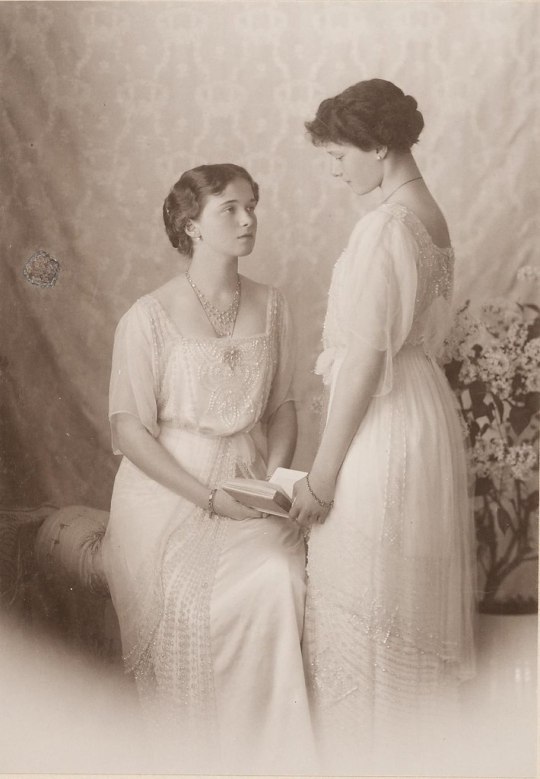
"However, exceeding everything else was a ball given at her palace by Maria Feodorovna, our Dowager Empress Dagmar Anitschkoff, for the Tsar's two oldest daughters Olga and Tatiana, when they reached their age of majority. It was the first great party the Empress Dowager gave after her husband, Alexander III's, death, and she had the lovely idea that everything was to be precisely the same as when she last gave a ball as the reigning Empress. For that reason both the Eng- lish ambassador and his wife, Lady Georgina Buchanan, and my husband and I were invited to attend, as though representing the family courts, much to the envy of the other members of the Corps Diplomatique. The Anitschcoff palace lies in the centre of the city and isn't of impressive size, but it had its own significance, having been for many years the centre of the Imperial Family. At the stroke of nine the Dowager Grand Duchess entered, followed by the two young Grand Duchesses and other members of the Imperial Family, among them their aunt, Grand Duchess Olga, who stood very close nearby. It is said so often, but it is therefore no less true that Empress Dagmar had the ability, no matter how large was the gathering, to give each single person present the feeling that she had seen and recognised them, and everybody thought her small happy smile referred to them. She was all in all a brilliant person, which she had plenty of opportunity to show later. It hurts to remember the two young Grand Duchesses, Olga and Tatiana, as they were that evening at their first ball, dressed in white, pretty, delicate and happy. There wasn't much etiquette, as far you could tell; they danced as they pleased, until the Empress Dowager ended the ball at four o'clock in the morning".
Anna Sofie Scavenius "A Diplomat's Wife at the Court of the Tsar"
98 notes
·
View notes
Text

Portrait of Grand Duchess Anna of Russia, by unkrown artist, 1885
***DO NOT REPOST***
Artist: Tintexture (twi: Tintexture)
Reference Used:
Clothes and accessories - Maria Feodorovna (Dagmar of Denmark)'s purple court dress and one of her official portrait
Facial features - Irina Alfyorova, a Soviet actress
37 notes
·
View notes
Text




The Royal Jewels of Iverny (part 1)
Queen Catherine's Emerald Diadem
Out of any tiara in the Ivernian royal collection, none are more closely associated with one specific member of the royal family than the emerald and diamond kokoshnik often worn by Princess Claudia, Princess Royal. While it is lovingly called "Princess Claudia's Tiara" by both the public and the royal family, the tiara is formally known as Queen Catherine's Emerald Diadem.
In 1891, Grand Duchess Yekaterina Alexandrovna of Russia, a great-granddaughter of Emperor Paul I of Russia, was betrothed to the third son of King Philip III of Iverny and Queen Mary Josephine, Prince Richard, the future Duke of Ettinger. As a wedding gift, the bride's parents commissioned a kokoshnik tiara set with emeralds from the collections of the bride's grandmothers, Grand Duchess Elena Pavlovna and Grand Duchess Anna Feodorovna. The young Yekaterina was delighted, and the tiara became a beloved reminder of home as she entered in to a new chapter of life in Iverny as Duchess of Ettinger.
After the tragic and sudden death of her niece Queen Jane II in the fall of 1918, Catherine stepped into her new role as consort alongside her husband, the newly crowned King Richard V. Her emerald kokoshnik tiara was worn for countless state dinners, galas, balls, and portraits throughout her eight-year tenure as queen, and into the 1930s and 1940s in her role as Queen Mother.
In 1949, on the occasion of her granddaughter's 15th birthday, Queen Catherine gifted the tiara to King Arthur V's only daughter, Princess Catherine. The young Princess Royal was said to be "positively elated" by the gift from her namesake. The Princess Royal wore the tiara regularly up until the early 1970s, when she gifted it to her niece, Princess Claudia. Reportedly, the note given to Princess Claudia alongside the tiara read "from one Princess Royal to Another, from your dear Aunt Cathy."
Princess Claudia first debuted Queen Catherine's Emerald Diadem in 1972. Over the past fifty years, the Princess Royal has worn the tiara almost exclusively, from her brother's coronation in 1976 to her own wedding in 1988 to nearly every state dinner. It is unknown if the Princess Royal will continue to wear the tiara into her old age, or if she will pass it on to her own niece, the junior Princess Royal, Princess Caroline, Countess Hatheway, as many anticipate.
HRH Catherine, Duchess of Ettinger, wears the yet-unnamed tiara in a portrait photograph, 1893.
HM Queen Catherine's first official painted portrait in her role as Queen consort, 1921.
HRH Princess Catherine, Princess Royal, wears her grandmother's Emerald Diadem at the French State Dinner, 1957.
HRH Princess Claudia, Princess Royal, shakes hands with guests at His Majesty's Charity Benefit Gala in Gaucelin, 1980.
post inspired by @warwickroyals 💙
#sims 4#ts4 royalty#the lorimers#ivernian royal jewels#lorimers: queen catherine#lorimers: princess catherine#lorimers: claudia#bluep.txt
33 notes
·
View notes
Note
Hello! I'm creating a Romanov roleplay so could you give me a list of members and friends of the Romanov family, and others (Standart officers, Bolsheviks, etc.) for people to roleplay? That would be very helpful since I know I'm going to accidentally miss some characters (^^”).
Hi! These are some people who were involved with the Romanovs:
Friends:
Anna Vyrubova—quite possibly Alexandra's dearest friend. Typically viewed as a bit of a simpleton or a cunning spy--the reality is probably that she was neither. Also very attached to Rasputin.
Lili Dehn—another of Alexandra's friends, a lady-in-waiting. Also close with Nicholas and the children; was with Alexandra when Nicholas abdicated.
Elizabeth Naryshkina—the elderly mistress of the robes.
Sophie Buxhoevedon—lady-in-waiting, affectionately known as "Isa" (also spelled "Iza").
Catherine "Trina" Schneider—also attempted (unsuccessfully) to teach the Romanov sisters German. Taught Russian to Alexandra. Lutheran.
Grigori Rasputin—infamous. Especially intimate with Alexandra, also a sort of mentor for the daughters. Killed in 1916.
Kolya Demenkov—Alexei’s friend.
Gleb Botkin & Tatiana Botkina—the children of Evgeny Botkin.
Sofia Orbeliani—Alexandra’s friend and an invalid. Died in 1915.
Countess Anastasia “Nastenka” Hendrikova—family friend.
Family:
Dowager Empress Maria Feodorovna—OTMA's grandmother. But a bit frosty in her relations with Alexandra.
Grand Duchess Olga Alexandrovna—Nicholas II's sister. Often the grand duchesses spent Saturdays with her.
Grand Duchess Xenia Alexandrovna—Nicholas’s sister. Her family was known as the Ai Todories due to their estate. Her daughter Irina especially was close to the daughters. (Irina’s husband, Felix Yussupov, was one of Rasputin’s assassins.)
Grand Duke Dmitri Pavlovich—one of Nicholas’s favorite cousins, and once considered a possible groom for Olga. Under the care of Elizabeth Feodorovna. One of Rasputin’s assassins.
Grand Duchess Elizabeth Feodorovna—Alexandra’s sister. Became a nun after her husband Sergei’s assassination in 1905; sent coffee and chocolate to the family during imprisonment. Murdered by the Bolsheviks.
Grand Duke Mikhail Alexandrovich—Nicholas’s brother. Married morganatically and exiled. Saw Nicholas before Nicholas’s departure to Tobolsk. Also murdered by the Bolsheviks.
Grand Duke Nicholas Nikolaevich—commander in chief of the Russian army during WWI until Nicholas II took over. Not liked by Alexandra due to his dislike of Rasputin.
Tutors/Staff:
Pyotr Vasilievich Pyotrov—the Russian tutor, known as "PVP."
Pierre Gilliard—the French tutor, especially close to Alexei. Often called "Zhilik" or "Monsieur."
Sydney Gibbes—the English tutor, often known as "Sig."
Sofia Tyutcheva—Known as "Savanna," OTMA's unofficial governess when they were young. Outspokenly against Rasputin, and not popular with the Romanovs' other friends.
Margaretta Eagar—OTMA's Irish governess, dismissed in 1904.
Anna Demidova—lady-in-waiting who accompanied the family and was eventually killed with them. Known as “Nyuta.”
Aloise (Alexei) Trupp—footman who was killed with the family; unique in that he was Latvian, and Catholic.
Ivan Kharitonov—cook killed with the family.
Leonid Sednev—companion of Alexei during captivity, eventually sent away by Yakov Yurovsky.
Eugene Botkin—doctor (primarily Alexandra’s). Killed with family.
Nagorny and Demenkov—Alexei’s “sailor nannies.” Only Nagorny continued on with the family to Tobolsk.
Standart Officers of Note:
Pavel Voronov—Olga's love interest in 1913. She wrote of him as "S." in her diaries.
Alexander Konstantinovich Shvedov—Also Olga's love interest in 1913, took place before Voronov. Referred to as "AKSH" in diaries.
Viktor Zborovsky—Anastasia's crush. She also exchanged letters with his sister Ekaterina "Katya" in captivity. Nicholas's favorite tennis partner.
Patients during WWI/Nurses, Doctors:
Dmitri Shakh-Bagov—Olga's love interest. Known as "Mitya."
Dmitri Malama—Tatiana's love interest. Gave her a dog known as Ortipo, named after his cavalry horse.
Valentina Cheborateva—OT’s friend and fellow nurse.
Margarita Khitrovo—fellow nurse and friend. Known as “Ritka” or “Rita.”
Dr. Vera Gedroits—female doctor. Known as “Princess Gedroits.” After the tsar’s abdication, her behavior turned increasingly unconventional.
Vladimir Kiknadze—Tatiana’s love interest after Malama. Considered a dangerous flirt by the other nurses and doctors.
Politicians:
Sergei Witte—Served as prime minister 1905-1906.
Pyotr Stolypin—Served as prime minister 1906-1911. Sofia Tyutcheva, Nicholas II, and OT were there at his assassination.
Mikhail Rodzianko—state chairman of the Duma, 1911-1917.
Bolsheviks/Captors, etc.:
Alexander Kerensky—member of the Provisional Government. Oversaw the Romanovs’ house arrest.
Eugene Kobylinsky—commandant during house arrest; nevertheless on good terms with the family.
Vasily Yakovlev—commissar, searched the house at Tobolsk; helped transfer the family to the Ipatiev House at Ekaterinberg.
Alexander Avdeev—commandant at the Ipatiev House.
Yakov Yurovsky—commandant at the Ipatiev House after Avdeev. Orchestrated the murders.
Pyotr Ermakov—one of the executioners, his accounts of the Romanovs and their murder are highly exaggerated and untruthful. Was drunk on the night of the murders.
Ivan Skorokhodov–despite the rumors there is no reliable evidence to support the idea of a liaison with Maria. However, he was really a guard at the Ipatiev House.
#imperial russia#history#anna vyrubova#lili dehn#sophie buxhoevedon#rasputin#maria nikolaevna#romanovs
19 notes
·
View notes
Text

Tsar Nicholas II, Empress Alexandra Feodorovna, Anna Vyrubova, Grand Duchesses Olga, Tatiana, Marie and Anastasia Nikolaevna Romanov and Tsarevitch Alexei Nikolaevich Romanov on the Standart amongst officers and others. I love Alexei's little grin!
#Nicholas II#OTMA#OTMAA#Romanov#Romanovs#Anastasia Romanov#Tatiana Romanov#Marie Romanov#Olga Romanov#Alexei Romanov
38 notes
·
View notes
Text

The 1997 Anastasia movie, while most likely being most people’s introduction to the Romanov Family and their history, was incredibly inaccurate.
Here are some of those inaccuracies
In the first opening moments, of the film we see the Dowager Empress Marie Feodorovna boarding the carriage to go to the ball. The footman greets her as Your Highness. In fact, the Dowager Empress addressed as Your Imperial Highness (there was a huge difference as Princess and Princesses were only entitled Your Highness.)
The Romanov Tercentennial was in fact 1913, not 1916.
In 1916, as the movie claims, Anastasia is 8. In fact, Anastasia was born in 1901, making her actually 15 at the time of the ball.
When we see Anastasia greet her grandmother at the ball, Marie Feodorovna wears a wedding ring on her left hand. In Russian Orthodoxy, the wedding band is worn on the right hand.
When the ‘evil’ Rasputin party-crashes the ball, Nicholas tells him he is a traitor. In the time Rasputin spent with the family, there was never any evidence that he betrayed them. He offered them his support, albeit for questionable reasons, but was only sent away for a short time by the Tsar under pressure from his ministers.
The raid of the Winter Palace occurred well into 1917, not 1916 as portrayed in the film. By this time, Nicholas had already abdicated (March of 1917) and they were imprisoned first at the Alexander Palace, then in the Governor’s mansion in Tobolsk, before being moved to the Ipatiev House in 1918, where they were ultimately murdered. The murder of the imperial family did not happen until two years after the ball in the film.
When Anastasia runs back to her room to retrieve her music box, we see the room to be rather “royal-looking” with a single large bed in the corner. Anastasia shared a room with her older sister Marie for all of their childhood, and their beds were in fact camp-beds; hard and not as luxurious as other royalty’s of the time.
Ten Years Later, 1926, Anya leaves the orphanage for a job at the fish market. When Anastasia reaches the fork in the road, the sign says Saint Petersburg. During the Great War, St. Petersburg was renamed Petrograd, a less German-sounding name. After communist leader Vladimir Lenin died in 1924, it became Leningrad, when it did not become Saint Petersburg again until 1991. Throughout the film this inaccuracy is repeated, most significantly in the song Rumor in Saint Petersburg. One would think even the peasants would be accustomed to a new name of their city after 10-15 years.
When Anastasia reaches the train station, the station guard wears the red cap with the Soviet crest. This crest wasn’t used in fact until the 1930s. It was only 1926.
A number of times, the peasants and Dmitri call her The Princess. In Russia, this would have been a great offense to her title, as Anastasia had always been, a Grand Duchess. The title Princess ranks significantly under Grand Duchess
Anya, is in fact a Russian nickname for Anna, not Anastasia. Anya was the name of her mother’s lady-in-waiting and close friend Anna Vyrubova. Anastasia’s nickname was Nastya, Nastia or shvibzik “imp”.
In 1926, the Catherine Palace was being used as a museum and its park area was open to the public, not quite as run down as in the film.
It wasn’t also the Imperial Family’s home, as suggested; they preferred the comfort and privacy of the Alexander Palace at Tsarskoe Selo, a little while outside the city.
When Olga, Tatiana and Marie come down to dance with their sister during the song, they all look to be around the same height. In truth, Anastasia was much shorter than her sisters. Tatiana was the tallest in the family, standing at around 5’9
The same mistake was made with Nicholas. When he and Alexandra come out of the portrait, he looks to be much taller than Alix; he, like his daughter, was actually rather short, only about 5’6, and stood around the same height as his wife.
When Bartok watches Vlad, Anastasia and Dmitri leave the ball room, he says All the Romanovs are dead. This simply wasn’t true. In 1919, around 30 Romanovs managed to escape via various methods, including the Dowager Empress Marie Feodorovna.
On the boat to France, Rasputin attempts to force Anya to jump off the side of the ship. She dreams she sees her father, sisters and brother playing in water. Nicholas calls her “Sunshine”, which was actually the nickname of her little brother, Alexei.
In this same dream, Alexei jumps from the top of the cliff down into the water. It was well-known that Alexei had a severe type 2 case of hemophilia, and there was no way Nicholas nor any of the sisters would have allowed him to make such a dangerous leap.
When the gang are journeying to Paris, they hope to meet the Dowager Empress. In 1926, Marie was actually living in Denmark, after the death of her beloved sister, Queen Alexandra of England the year before.
When Anastasia meets Sophie, she is asked how she likes her tea. Anastasia tells her she doesn’t like tea. But there have been many anecdotes of the real Anastasia drinking tea in the mornings and afternoons with her sisters and parents. (This of course may have changed as she aged).
When Dimitri refers to Anya and the Dowager Empress as ‘your grace’ this title is also incorrect. “Your Grace” was commonly used only amongst non-royal dukes and duchesses, and archbishops of the United kingdom.
When Vladimir announces ‘we have found the heir to the Russian throne’, this is completely innacurate. Even as the closest surviving member to the last Tsar, Anastasia would, sadly, have no right to the throne. There were around 30 dynastic members of the family surviving in 1926, and many available males. In Imperial Russia, the line of succession was strictly male-primogeniture; the eldest son would inherit the throne. In 1926, by law, this male would be the Grand Duke Cyril Vladimirovich.
The Dowager Empress could not have possibly had the means to offer a 10 million ruble reward for the return of her granddaughter. The Romanov fortune had all but disappeared and she largely relied on the charity of the English and Danish Royal Family.
The biggest inaccuracy, however, was that Anastasia survived. She, along with the rest of her family, were murdered by the Bolsheviks in 1918

#russian history#tsarist russia#anastasia romanov#anastasia 1997#film history#historical inaccuracies
26 notes
·
View notes
Text
POV; Where’s Waldo but make it Romanov edition:
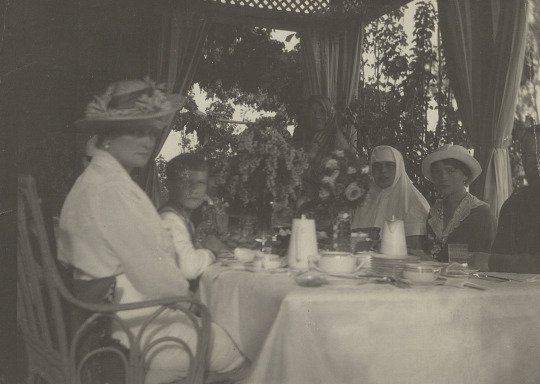
I’ll give you time to figure it out *hint, it’s Olga that your trying to find*
~~~~~~~~~~~~~~~~~~~~~~ahem i present to you~~~~~~~~~~~~~~~~~~~~~
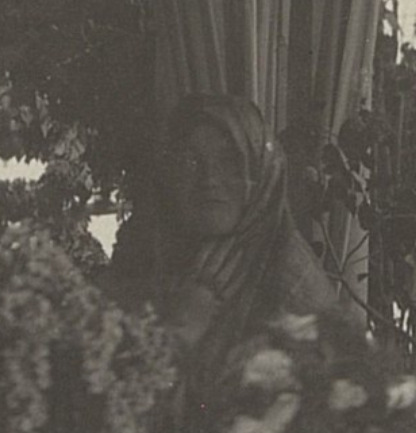
SHE IS IN THE FREAKING CURTAINS! HAHAHAHAHA

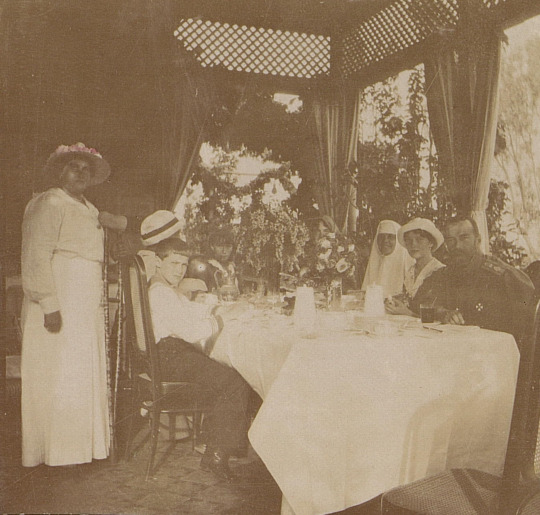
Grand Duchess Olga Nikolaevna hiding in the curtains at Evpatoria in 1916, surrounded by her family, Tsar Nicholas II, Tsarina Alexandra Feodorovna, Grand Duchesses Tatiana, Maria, and Anastasia Nikolaevna, and Tsarevich Alexei Nikolaevich
Also featured is Anna Vyrubova (friend of the family), and Margarita “Rita” Khitorovo (friend of OT and fellow Sister of Mercy)
#BAHAHAHAHAHAHA#😭💀😂🤣#*dies of laughter*#bro these kids were so funny I swear🤣#more evidence as to why she is my fav sister#and why I’m currently obsessed with her for no reason#olga nikolaevna#romanovs being funny#tatiana nikolaevna#maria nikolaevna#anastasia nikolaevna#alexei nikolaevich#otma#romanov#otmaa#alexandra feodorovna#tsar nicholas ii#anna vyrubova#margarita khitorovo#evpatoria#1916#romanovs
77 notes
·
View notes
Text

Grand Duchess Anna Feodorovna of Russia (nee Princess Juliane of Saxe-Coburg-Saalfeld) by Mottet.
31 notes
·
View notes
Note
OMG plant, they you see that interior?!!!! The antique art next to family portraits. The dark wood accents, the piano, the lamps….KP playing with us, knowing they just unleash the greatest thing ever… please, need shots of the garden!
I died. The portrait!!! Is it a Vigee-Lebrun??? She’s one of my favorite artists!!!! Imagine just casually strolling in front of your Vigee-Lebrun materpiece. OMG. Forget, the jewels and the tiaras. That’s true glamour.
Edited: I think it’s a copy, but still. So gorgeous!
68 notes
·
View notes
Text




Empress Alexandra Feodorovna, her friend Anna Vyrubova and her daughters Grand Duchess Olga Nicholayevna and Grand Duchess Tatiana Nicholayevna, working as Sisters of Mercy in their military hospitals
Beautiful colorization by Tatiana Z; in the first photo, Alexandra, Olga, and Tatiana; second photo: Olga and Tatiana; third photo: Anna, Tatiana, Olga, and sitting sideways, the Empress posing with some of their young patients.
#russian history#romanov dynasty#Grand Duchess Olga Nikolaevna#Grand Duchess Tatiana Nikolaevna#Empress Alexandra Feodorovna#anna vyrubova
11 notes
·
View notes
Text

Anastasia watches her mother and one of her sisters play chess, with Anna Vyrubova.
12 notes
·
View notes
Text

Juliane, Princess of Saxe-Coburg-Saalfield, Grand Duchess Anna Feodorovna of Russia - Franz Xaver Winterhalter // Still Life of Flowers and Fruit - Jan Frans Eliaerts (detail) // South London Forever - Florence + the Machine
#still life#still life painting#south london forever#high as hope#florence + the machine#florence and the machine#fatm#art#art history#lyrics#lyric art#charlotte survives february
103 notes
·
View notes